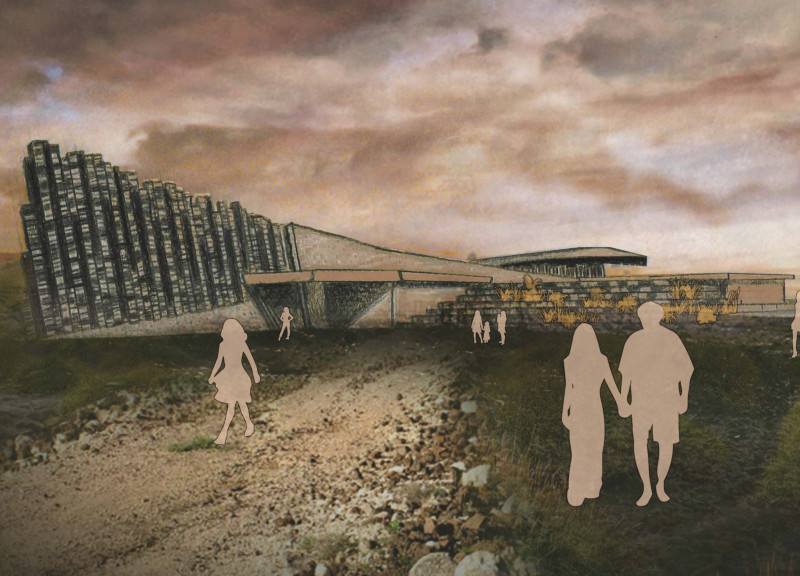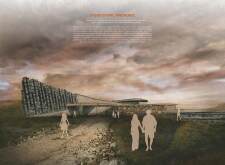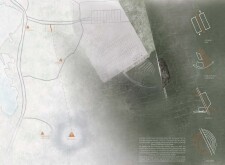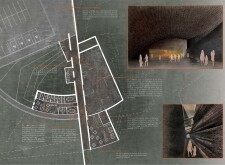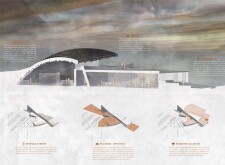5 key facts about this project
The volcano museum in Myvatn offers an intriguing response to its volcanic landscape. Located in an area known for unique geological formations, the museum has the dual purpose of educating visitors and providing a space for contemplation. The design concept revolves around stereotomic construction and mnemonic elements, creating an experience that connects people with the natural history of the region.
Stereotomic Construction
The design incorporates stereotomic techniques, which involve carving spaces from solid materials. This approach allows the structure to appear as if it rises from the ground. It reflects the natural geological processes that have shaped the area over time. The building's forms resonate with the surrounding terrain, establishing a clear visual and physical link to the volcanic landscape.
Visitor Journey
At the center of the museum is a linear pathway that guides visitors through a series of designed spaces. This route is oriented to ensure views of the Hyverfjall Volcano are always at hand. This connection between the museum and its environment reinforces the educational experience. The careful layout includes both public areas for social interaction and private spaces that provide opportunities for reflection.
Materiality
Locally sourced materials such as turf, volcanic rocks, and concrete play a significant role in the construction of the museum. Turf acts as a primary building material by utilizing traditional practices that enhance thermal performance. Volcanic rocks, sourced from the region, contribute to the building's aesthetic and narrative. Concrete is used to provide structural integrity and flexibility in the use of space.
Culminating Experience
The café is situated at the end of the visitor journey, offering panoramic views of the volcano and prompting reflection on the landscape. Designed as a social space, it encourages visitors to engage with their surroundings in a relaxed setting. The large openings throughout the museum create a strong connection between its interior and the outside world, allowing the beauty of the volcanic landscape to be an integral part of the visitor experience.


